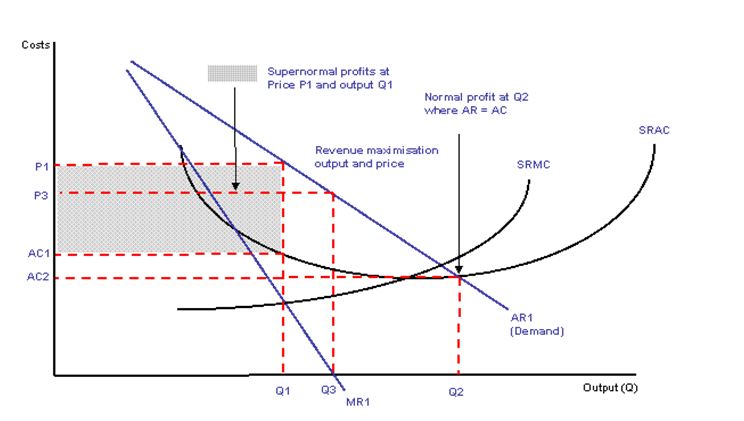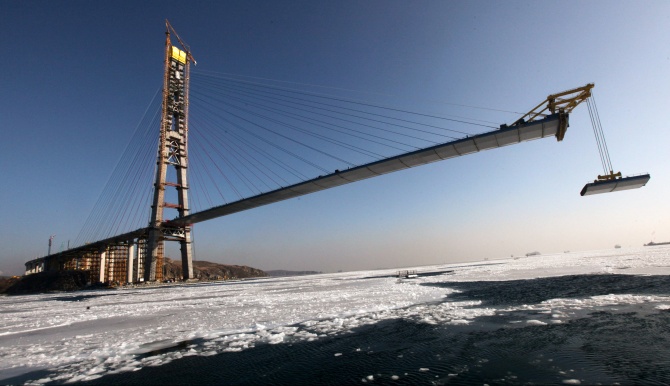The Environment
Natural environment – all living and non-living things that occur naturally on Earth, including the climate, weather and natural resources
Built environment – the part of the physical environment that is constructed by and for human activity
Environmentalism – advocacy for or work toward protecting the natural environment from destruction or pollution
Ecology – a branch of Biology that deals with the relationship between organisms and their environment
Political ecology – the study of the effect of politics and economy on ecology and vice-versa
Pollution – the introduction of contaminants into the environment (for instance air, water, soil) resulting in instability, disorder or harm
Sustainable development – development that meets the needs of the present without compromising the ability of future generations to meet their own needs
Recycling – the process of collecting and reprocessing materials that would typically be considered waste into new products
Clean energy – energy produced through renewable resources and that does not pollute the atmosphere when used
Resource efficiency – using the Earth’s limited resources in a sustainable manner, while reducing the impacts on the environment
Associated Vocabulary
Climate change – a long-term change in the earth’s climate, especially a change due to an increase in the average atmospheric temperature
Biodegradable – a material capable of being decomposed by biological agents in a relatively short time
Biodiversity – the variability among all living creatures on earth, within species or between species and ecosystems
Demography – the study of the characteristics of human populations, such as size, growth, density, distribution, and vital statistics
Desertification – the transformation of arable or habitable land to desert, as by a change in climate or destructive land use
Ecosystem – the relationships and interactions that occur between organisms or between organisms and their environment
Endangered species – a species facing the danger of extinction due to natural or man-made changes in its environment
Greenhouse effect – process which accounts for the absorption of thermal radiation coming from the planet’s surface by greenhouse gases and then re-emitted in all directions. This effect is the way through which global warming occurs.
Greenhouse Gas – a gas which is in the atmosphere that absorbs and emits radiation on an infrared spectrum, the high levels of these gases in the atmosphere are the prime causes of the greenhouse effect.
Habitat destruction – the destruction or damaging of a natural habitat to such an extent that it can no longer support the species particular to it
Intensive farming – a system of cultivation used in agriculture characterized by the use of large amounts of capital and labor in relation to the size of an area
Natural resources – naturally occurring substances that are considered to have an economic value
Overpopulation – excessive population of an area to the point of overcrowding, depletion of natural resources, or environmental deterioration
Ozone depletion – the steady corrosion and depletion of the ozone from the stratosphere, leading to a decrease in the protection against ultraviolet radiation
About The Environment
The term of “environment” is generally used to designate the circumstances and conditions that surround an individual or an organism. From its early beginnings, humanity has not only adapted to the natural environment, but has modified it in order to better suit its needs and to provide comfort.
The issue arose from the fact that human activity considered the possible repercussions on the natural environment. Starting with the Industrial Revolution, technologies became increasingly harmful to Earth’s ecosystem, resulting in the pollution and often the destruction of various natural habitats, as well as of the life forms that inhabited them. Furthermore, the alarmingly rapid growth of population led to excessive urbanization and use of limited resources.
It was only in the late 19th century, early 20th century that the concern for environmental issues became a serious matter in the public view. Britain’s “Alkali Acts”, passed in 1863, concerned the excessive air pollution resulted in the production of soda ash and are considered the first large-scale laws in regard to environmentalism. Environmental movements soon gained in importance as they attempted to raise public awareness to issues such as air, soil and water pollution, initially, as well as global warming, overpopulation and genetic engineering in the contemporary society.
These efforts also led to the discovery of various technologies that would aid people in protecting the environment and possibly restoring it. One such example was the implementation of clean or green energy through the use of hydro power, solar or wind power. Many other sciences, such as chemistry or IT, developed a green branch that would use as little hazardous or polluting material as possible. Finally, some importance was placed on the education of the young in these matters and various methods of recycling, preserving energy, water or materials were presented to the public.

In spite of all these efforts, however, the number of people who act and live with the welfare of the environment in mind still amounts to a minority. Due to financial inconveniences or simply due to the reluctance to change that most people display, the planet is now more than ever in great danger as it is slowly becoming an uninhabitable environment for both human beings and other life forms.
Causes Environmental Issues
Some of the most harmful agents when it comes to the health of the environment are the population overgrowth and the consequent excessive waste and resources requirements, the unsustainable use of these resources, poverty, urban development or habitat fragmentation and destruction.
More than 7 billion people currently inhabit the planet, compared to only 3 billion in 1967. Every year about 135 million people are born and 55 million people die, adding 80 million to our global population, a fourth of the United States population. This overpopulation means that the demand in resources such as water and food also increases to an unsustainable level. Furthermore, excessive amounts of waste are dumped onto overflowing landfills and even into the water, causing grave disturbances in the natural ecosystems.
Due to these changes in population, the gap between the poor and the rich has drastically increased over the past few decades, statistics pointing out the fact that more almost half of the population of Earth relies on a mere $2.5 US dollars for their daily living expenses. Poverty is another major cause of environmental issues because it involves a very low standard of education, an even higher rate of population growth, precarious hygiene conditions and a damaging intensive agriculture.
Urban development has also been deemed harmful to the environment, mostly because of the fact that it involves the fragmentation, the damaging and even the destruction of natural habitats. Between 200 and 2000 species go extinct every year due to the disappearance of their habitat and the intervention of man.
Another concerning fact is represented by the constant greed mankind displays when faced with a less profitable alternative. Greenwashing is a means through which a company actively and deceptively promotes eco-friendliness. Greenwashing is the way in which companies lie to the consumer in order to profit from the average consumer’s naivety. For example, in 2009 European McDonald’s had changed the traditional red and yellow logo to a green and yellow one. A spokesman for the company outlined the change as being a clarification of their concern for the environment – maybe concern whether there is anything else left to exploit or not. A similar situation is Coke’s 2007-2008 greenwashing campaign related to the company being water neutral. Chairman Neville Isdell declared that the company had “pledged to replace every drop of water we use in our beverages and their production: to achieve balance in communities and in nature.” However, the improvement in water-use for an average coke drink only fell 2%, in the timeframe of one year, 2006-2007, whereas they declared a 20% improvement from 2002-2007. Later on, a group of water scientists including coke’s managing director of water stewardship wrote a “concept paper” about water neutrality, clarifying what it actually refers to.
Finally, pollution is a well-known agent in the damaging of the environment, whether it refers to air, water, soil, sound, radioactive or even visual pollution. For instance, one great source of concern in the contemporary world is the global warming effect caused by the increasing concentration of greenhouse gases produced by such human activities as the burning of fossil fuels or deforestation. Its already visible consequences include the rise in the sea levels, changes in the pattern of precipitations and frequent extreme weather events leading to loss of crops or of habitat and to natural disasters such as floods.
Environment Statistics
- One of the biggest causes of death is pollution, having a toll of over 100 million people every year, in the close vicinity of diseases such as malaria or HIV.
- CO2 emissions have increased with 50% over the past 40 years than they have since 1776. They are still increasing.
- In the U.S. over seventy different kinds of pesticides (chemicals used for crop preservation) in groundwater, which is a potential source for potable water.
- More than 90 different pesticide compounds are suspected of being the cause of cancer, genetic mutation and even birth malformations.
- R.I (World Resources Institute) shows that deforestation has peaked historical limits, having more than 80% of the world’s forest cover lost to deforestation.
- The world’s population consists of nearly 10% children out of which close to 3 million under the age of five pass away annually because of environmental causes.
- Though Botswana has only 2 million people, it is the second most polluted nation in the world. Pollution from the mineral industry and wild fires are the main causes.
- Indoor air pollution resulting from the use of solid fuels is a major killer. It claims the lives of 1.5 million people each year, more than half of them below the age of five: that is 4000 deaths a day. To put this number in context, it exceeds total deaths from malaria and rivals the number of deaths from tuberculosis.
- In Kabwe, Zambia, child blood levels of lead are five to 10 times higher than the allowable EPA maximum.
- Every year, the Ecuadorian deforestation releases 2 billion tons of CO2 into the atmosphere, contributing 20-to 25% of global warming.
- Over 80% of items buried in landfills could be recycled instead.
- Although Americans sum up to almost 5% of the population of the world, they manage to produce 30% of the global waste and use a staggering 25% of the available natural resources.
- If every American recycled just one-tenth of their newspapers, we could save about 25 million trees each year.
- Americans buy over 29 million bottles of water every year. Making all those bottles uses 17 million barrels of crude oil annually, which would be enough fuel to keep 1 million cars on the road for one year. Only 13% of those bottles are recycled. Plastic bottles take centuries to decompose—and if they are burned, they release toxic byproducts such as chlorine gas and ash containing heavy metals.
- If all the tires Americans throw away each year were stacked on top of each other, the pile would reach 32,000 miles high—a greater distance than the circumference of the earth at the equator (24,901 miles).
- Close to 2 million premature deaths are attributed to indoor air pollution and most of them occur to children under the age of 5, because of factors which cause pneumonia.
- 1/3 of the population growth in the world is the result of incidental or unwanted pregnancies.
- At least 150 million couples throughout the world want, but do not have, access to reproductive Health Services.
- Outdoor air pollution causes almost 1.3 million deaths worldwide per year.
- One of the more common and dangerous pollutants in the environment is cadmium, which kills human fetal sex organ cells. Its widespread presence and its use in the fabrication of containers and cans means it is in almost everything we eat and drink.
- Research conducted by NASA scientists reveal that the main cause for extreme weather conditions in the past years (floods, hurricanes, drought or tornadoes) are due to an overall global warming.
- On 16th September 2009, the Vienna Convention and the Montreal Protocol became the first treaties in the history of the United Nations to achieve universal ratification.
- In 2008, the U.S.A is officially recognized by International Energy Agency as the world’s second largest GHG (greenhouse gas) emitter, in the close vicinity of the leader, China.
- In May 2009, Cyprus’ government allowed the development of luxurious golf courses which waste water amounting up to over 1/3 of the annual need of the local population.
Debates and Controversies
|
Controversy/Debate: Why would we “go green” instead of trying to improve the actual life-style and technology? |
|
| For |
Against |
| Engineers and scientists have proven that green and sustainable technological development helps to reduce pollution and saves resources. | The government might argue that eco-friendly technologies are expensive, require high maintenance and are very hard to implement at large scales. |
| Teachers support the fact that educating people towards awareness for environmental issues helps preserve the natural resources and contain pollution. | Some citizens contest that the outcome of the efforts and awareness of one individual cannot change much on these issues that are already at a global scale |
| Automotive companies have, for some time now, mass-production cars that protect the environment. | A teenager might wonder why anyone would spend more money on a car that is not even cool. |
| Economists indicate that saving energy does not only help your budget, but in the long term, it means that less resource is spent for the making of energy. | An average consumer believes that using solar panels and eco-friendly light bulbs implies enormous costs. |
| Business analysts have proven that because of the global-use of machineries that burden the ecosystem with polluting chemicals, soon enough there will be no more “business”. Furthermore, future generations will inherit an uninhabitable world. | Other people involved in business, state that environmentally friendly technology is more expensive and provides less profit than polluting ones. |
| Workers in the health industry point out that every year there is a great percent of people actually dying because of pollution – whether it’s in extreme weather caused by global warming or chemicals that they breath, eat or drink. | Even though every individual bears a moral responsibility for contributing to the destruction of the environment, a lawyer would point out that, legally speaking, they cannot be held responsible or accused. |
| Sentimental environmentalists are promoting the conservation of the nature as it has been our home. We should strive not to dominate the natural world around us, but try to develop a harmonious relationship with it. | Some scientists and economists point out to the fact that if we had the possibility of creating our own resources and habitat we would not need to care about the environment or nature anymore. We should develop our technology to the point where humanity could break from nature altogether. |
Aldo Leopold’s book is known to be one of the most influential discourses on the conservation of nature and his research has led to the foundation of the wildlife management branch of science.
Rachel Carson’s book deals with the subject of chemicals involved in crop-growth and it led to the prohibition of DDT, a highly dangerous substance that can cause cancer. Her publication led to the awareness of issues such as air pollution and petroleum spills and the formation of notable groups such as Greenpeace and Friends of Earth.
Lovelock’s work forms the hypothesis that Earth can be perceived as a single organism, which became an important part of the Deep Green ideology – which integrates a more radical approach to the harmful effects of civilization upon nature.
International treaties and protocols concerning the environment
The Montreal protocol has opened for signature on 16 September 1987. The document is an international treaty on which now all the UN member states have agreed upon and ratified. It refers to the reduction of ozone depleting toxic emissions.
The Kyoto protocol is an international treaty that sets binding obligations on industrialized countries regarding the emissions of greenhouse gases. Although the treaty was signed during the Clinton administration by the United States of America, it was never approved by the Senate. In 2011, Canada, Japan and Russia openly declared they would not follow Kyoto targets anymore, Canada officials announcing their withdrawal from the protocol, effective as of the end of 2012.
Although, in the beginning, it could not provide enough energy to even light a light-bulb, scientific research in the past 50 years has managed to create hydrogen fuel cell powered vehicles – but they are still too expensive for mass production.
Bio gas is a clean and environmentally friendly source of renewable energy. It is the by-product of organic waste materials and with a small labor input it can replace firewood or fossil fuels. It also has a positive influence on crop-growth.
Bio filters are now the main component in the recycling and management of waste water.
Famous People, Organizations and Movements
John Muir (naturalist and writer) – spent most of his life trying to preserve the wilderness of western America; due to his perseverance, the Yosemite and the Sequoia National Parks were created, along with uncountable other conservational areas.
Rachel Carson (scientist and author) – considered by most people the founder of the modern environmentalist movement, she studied Biology and then wrote eye-opening literature that led to the banning of very harmful pesticides.
Aldo Leopold – an American professor who published “A Sand Country Almanac”, a book considered to be one the most influential discourses when it comes to the preservation of nature. He upheld environmental ethics and wilderness conservation and his studies have led to the founding of the science of wildlife management.
Greenpeace – a non-profit environmental organization which has extended in over forty countries. They state that their goal is to “ensure the ability of the Earth to nurture life in all its diversity”. Known for its highly direct actions, it has earned the name of the most visible environmental organization in the world.
The Global Environment Facility (GEF) – unites over 182 countries, international institutions, civil society organizations, as well as the private sector in the search for sustainable, long term development initiatives. Nowadays, it is the largest public founder and sustainer of projects that improve and conserve the global, natural environment.
Bono – the Irish rock star of the band U2 is renowned for his philanthropic and environmental activism. An active member of the Greenpeace organization since 1993, he also participated in a tree-planting ceremony in Tokyo Bay, in 2008 where efforts were being taken to turn a landfill into a forest of over 88 hectares.
Al Gore – former vice-president of the United States, co-recipient of the Nobel Peace Prize in 2007, has been involved over a number of decades in initiatives meant to raise environmental awareness, especially regarding climate change. He founded two non-profit organizations in 2010 that deal with climate change issues.
Opinion Articles and Commentaries
The Economist provides an in-depth and long term analysis on the rate of consumption and effects of shale gas and oil. The great American companies that exploit these resources are now growing skeptical in regards to long-term profitability. Because of the low price of shell gas, the industry is slowly shifting towards gas consumption from petrol, a resource that has been over-exploited in the past decades and that consequently is now very expensive. The big picture is presented by scientists who promote eco-friendly technology and support the fact that, as petrol, shell gas is more and more needed. Therefore, the costs to keep the offer will rise through the roof and the resource will eventually end up depleted given its consumption rate.
NBC News recently posted an article about carbon dioxide emissions. These emissions are the main cause for global warming because of the effects they have on thinning and weakening the ozone layer – the protective shield of our planet that keeps it safe from solar radiation. Although recent studies show that our climate is not so sensible to these toxins, we have already produced more than half of the amount of carbon necessary to warm our planet above an acceptable limit.
Environmental Health News provides an article showing efforts for the reduction of mercury-based healthcare utensils. Although the presence of this toxic gas in the atmosphere is majorly attributed to coal industry, the elimination of thermometers and sphygmomanometers from hospitals will have an impact. Even if the digitized version of the devices is not so accurate in some cases, proper use leads to full measurement accuracy. Furthermore, these alternatives are much more expensive still, but the price that is constantly being paid for properly dealing with accidents that include mercury spills far outweighs the initial payment. Moreover, the immediate and astounding impact which mercury has on the human organism is not to be neglected, being a substance that spreads easily through air or water and accounted for grave neurological effects in fetuses or children going to immune and cardiovascular system failures. Lastly, after all of the above mentioned is considered, pollution with this toxic substance needs to be stopped, whether it is because of the harmful consequences it has on the environment or on ourselves.
The Guardian provides coverage on the 2013 UN summit on climate change, which has taken place in Poland. The economic issues are the clear obstacle for these negotiations, causing great delay in a time where action is essential. However, the polish representatives disagree on the negative effects on the environment caused by coal exploitation, instead of admitting to the nature of their discontent.
UNEP newsletter on the progress of the conservation of the local mountain gorillas – nearly extinct population of great apes. Besides the creation of a natural habitat, which is proving to be an important fundamental for the economy of the region, the project has involved several countries. This cross-country involvement has offered political consensus in a region where diplomatic relations are tense.
I do hope enjoyed reading this post on environmental assessment methods and the environment in general. There are many other titles available in the construction dissertation collection that should be of interest to construction management students and building professional. There are many dissertation titles that relate to other aspects of construction such as project management techniques, environmental management, building and construction methods to name a few. It took a lot of time to write this post and I would be grateful if you could share this post via Facebook and Twitter. Feel free to add your thoughts in the comments section. Thank you.




